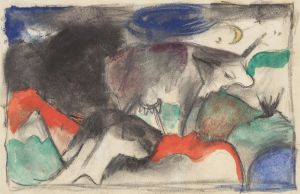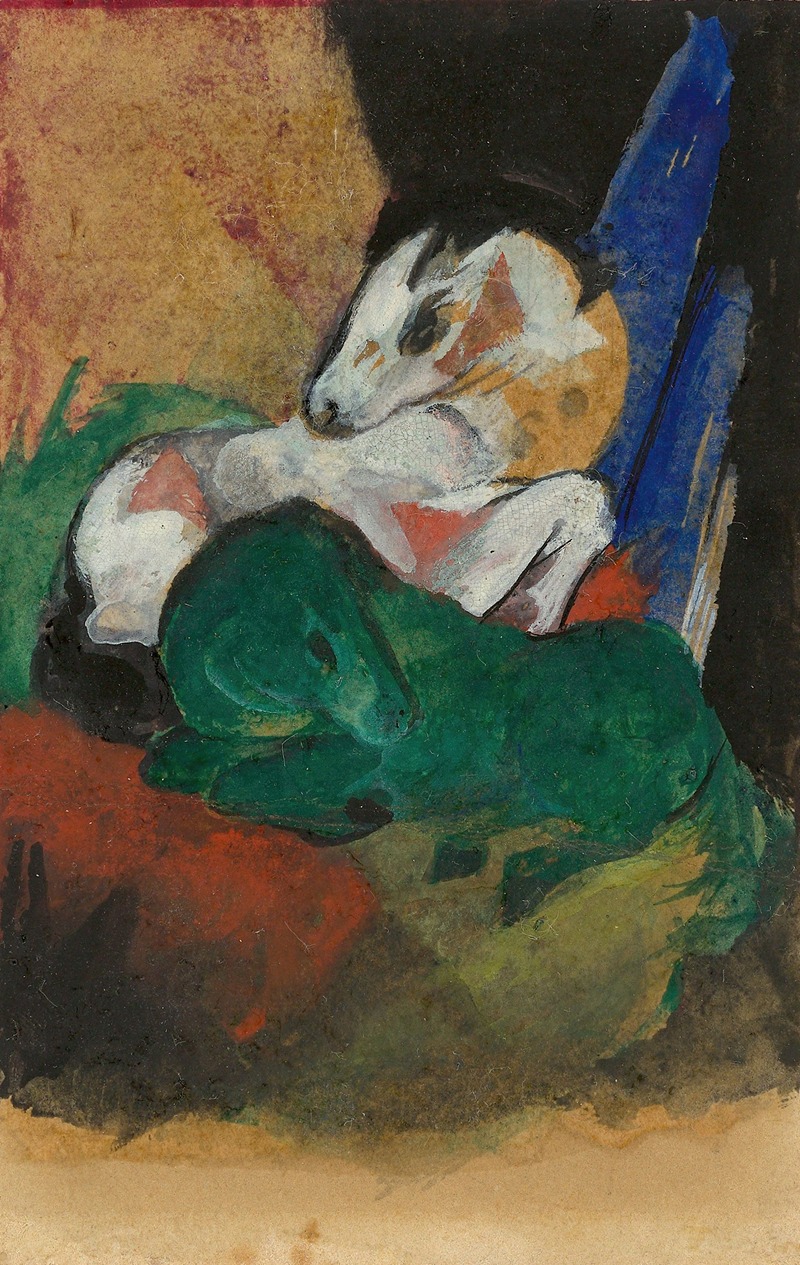
Grünes und weißes Pferd
A hand-painted replica of Franz Marc’s masterpiece Grünes und weißes Pferd, meticulously crafted by professional artists to capture the true essence of the original. Each piece is created with museum-quality canvas and rare mineral pigments, carefully painted by experienced artists with delicate brushstrokes and rich, layered colors to perfectly recreate the texture of the original artwork. Unlike machine-printed reproductions, this hand-painted version brings the painting to life, infused with the artist’s emotions and skill in every stroke. Whether for personal collection or home decoration, it instantly elevates the artistic atmosphere of any space.
"Grünes und weißes Pferd" (Green and White Horse) is a painting by the German Expressionist artist Franz Marc. Created in 1912, this work is a notable example of Marc's fascination with animals and his use of vibrant colors to convey emotional and spiritual states. Marc was a founding member of the Blue Rider (Der Blaue Reiter) group, which was pivotal in the development of Expressionism in early 20th-century Germany.
Franz Marc was born on February 8, 1880, in Munich, Germany. He initially studied theology but later shifted his focus to art, enrolling at the Munich Academy of Fine Arts in 1900. Marc's early works were influenced by naturalism, but his style evolved significantly after encountering the works of Vincent van Gogh, Paul Gauguin, and the French Fauves. His meeting with Wassily Kandinsky in 1910 was particularly influential, leading to the formation of the Blue Rider group in 1911.
"Grünes und weißes Pferd" exemplifies Marc's mature style, characterized by bold color choices and a departure from realistic representation. In this painting, Marc uses green and white to depict a horse, a subject he frequently explored. Horses, for Marc, symbolized purity and a harmonious existence with nature. The use of green, a color often associated with life and renewal, and white, symbolizing purity and innocence, reflects Marc's idealistic vision of the animal world.
The composition of "Grünes und weißes Pferd" is dynamic, with the horse appearing almost abstracted through the use of geometric shapes and planes. This abstraction is a hallmark of Marc's work during this period, as he sought to express the inner essence of his subjects rather than their external appearances. The painting's background is composed of fragmented, colorful shapes that create a sense of movement and energy, further emphasizing the vitality of the horse.
Marc's use of color was heavily influenced by his belief in the spiritual and emotional power of color. He often assigned symbolic meanings to different colors: blue for masculinity and spirituality, yellow for femininity and joy, and red for violence and conflict. In "Grünes und weißes Pferd," the green and white hues convey a sense of tranquility and purity, aligning with Marc's vision of an idealized natural world.
Franz Marc's career was tragically cut short by his death in World War I. He was drafted into the German army in 1914 and was killed in action on March 4, 1916, during the Battle of Verdun. Despite his brief career, Marc left a significant legacy in the world of modern art. His works continue to be celebrated for their innovative use of color and form, as well as their profound emotional and spiritual depth.
"Grünes und weißes Pferd" remains an important piece within Marc's oeuvre and is a testament to his unique artistic vision. The painting is housed in the Städtische Galerie im Lenbachhaus in Munich, where it continues to be admired by art enthusiasts and scholars alike. Through this work, Franz Marc's legacy as a pioneering figure in Expressionism and his deep connection to the natural world endure.





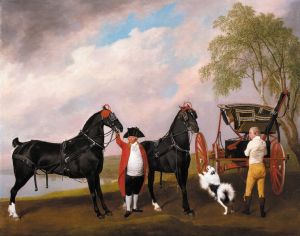
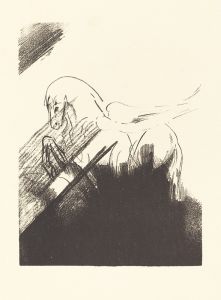
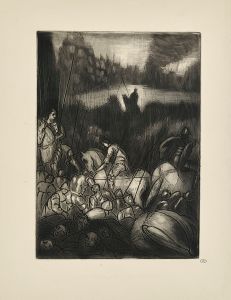
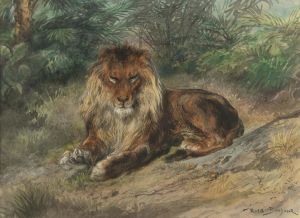

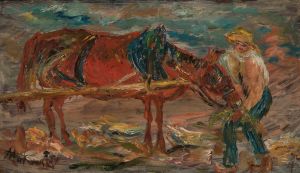
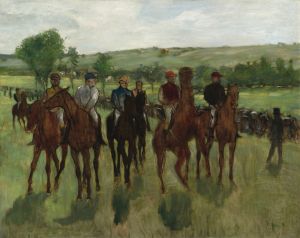
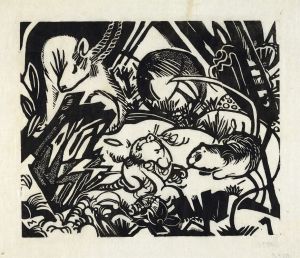

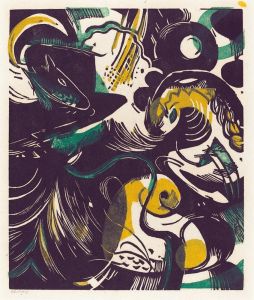
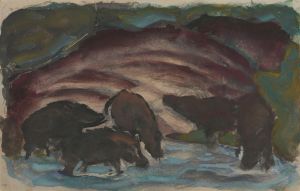
![Die Wölfe [The Wolves ]](/imgs/270071/s/franz-marc-die-wolfe-the-wolves--cad0df48.jpg)

